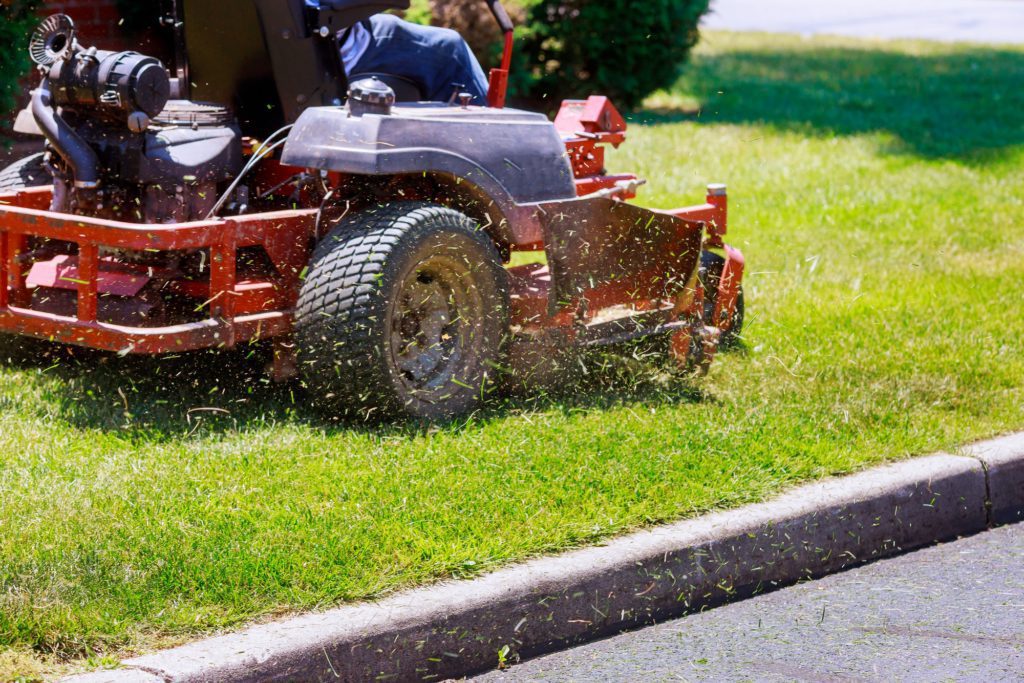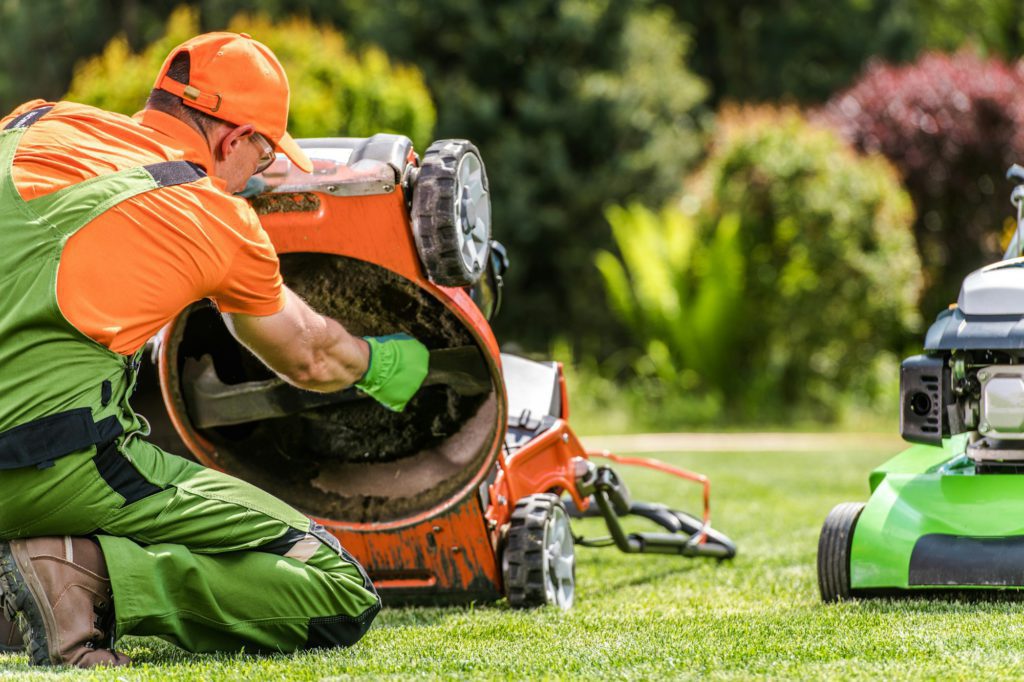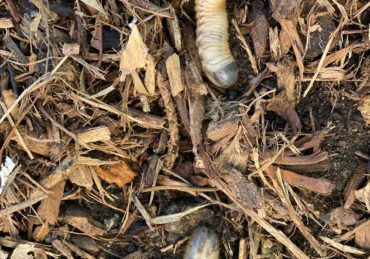It’s late fall. The garage is half-packed with rakes, patio chairs, and bags of leftover mulch. You glance at your mower sitting in the corner and think, Is it too late to deal with that? The truth: spending a little time now can spare you a dead battery, rusted components, or spring startup headaches.
This guide walks you through how to winterize your lawn mower and prep your lawn the right way, so everything’s ready when growing season returns.

Why Winterizing Your Lawn Mower (and Lawn) Still Matters
What Happens If You Skip It
Winterizing isn’t just about storage, it’s about avoiding costly repairs later. When you skip mower prep, leftover fuel breaks down and clogs carburetors, batteries lose charge, and moisture triggers corrosion. Ignoring your lawn invites bare spots, soil compaction, and root damage that slows recovery in spring.
A few extra steps now protect both your mower and your grass from the elements.
Reality Check – Skipping winter prep can turn a $10 spark plug into a $300 repair bill.
Long-Term Equipment Damage vs. Quick Seasonal Upkeep
Before you park your mower for the season, give it a proper send-off:
- Scrape off built-up grass and debris to prevent rust.
- Change the oil and check the air filter and spark plug.
- Either drain the fuel tank or add stabilizer to keep gas from turning gummy.
- Sharpen and lightly oil the blade to prevent corrosion.
These tasks don’t take long, and they keep your mower running strong next year.
When to Winterize Lawn Equipment and Your Lawn
Signs It’s Time to Stop Mowing
Once your grass stops growing every week and daytime highs stay below 50°F, it’s time to prep your mower for storage. Pushing past that point stresses the lawn and leaves it vulnerable to cold damage. That last cut signals the start of winterization.
As a rule: winterize your mower within a week of your final mow.
Final Fertilization and Cleanup Window
Don’t fertilize until the yard’s cleared. Rake leaves, bag debris, and remove thatch so nutrients reach the soil. Your last fertilizer pass, ideally a slow-release winter blend, should go down two to three weeks before the ground freezes.
Note – Even in warm regions, once mowing stops weekly, your mower still needs proper off-season prep.
How to Winterize a Gas Lawn Mower
Fuel: Drain or Stabilize?
Gas sitting idle through winter can separate and clog the carburetor. You’ve got two good options:
- Drain the tank and run the engine dry, ideal for mowers stored in unheated sheds or garages.
- Use a stabilizer, top off the tank with fresh gas, and run the mower for 10 minutes to circulate.
Either method protects your fuel system, but choose based on where and how you’re storing it.
Change the Oil Before Storage
Old oil carries moisture and acids that can corrode internal engine parts over winter. Run your mower for a few minutes to warm the oil, then drain and refill it with the right grade.
If your model has an oil filter, change that too.
Check the Spark Plug, Air Filter, and Blade
The air filter and spark plug often get ignored, but they’re essential for a clean start come spring. Replace the plug if it’s fouled or worn. Swap or clean the air filter depending on your model.
Don’t forget the blade: remove it, clean it, and give it a quick sharpen. Coat it with a light oil to prevent rust.
Pro Tip – Label the spark plug wire with masking tape now so you’re not second-guessing wiring next season.
How to Winterize a Battery or Electric Mower
Remove the Battery and Clean Contacts
Battery-powered mowers are simpler to winterize, but still need care. Take out the battery and store it indoors in a cool, dry place, somewhere between 50–70°F is ideal. Wipe the terminals clean and brush off grass or buildup from the deck.
Charging the battery every few weeks during storage can help extend its lifespan.
Store It Right to Avoid Moisture and Risk
Moisture and cold are the enemy. Keep your mower somewhere dry with good airflow. Avoid plastic tarps that trap condensation.
Inspect wires and battery ports for wear. If cords look frayed or cracked, flag them now, don’t wait until spring.
Warning – Leaving lithium-ion batteries in a freezing garage can permanently reduce runtime or kill the pack entirely.
Smart Storage Makes All the Difference
What to Cover — and What Not To
Store your mower on a dry, level surface. Avoid placing it directly on concrete floors, moisture wicks up and can rust components.
Use a breathable fabric cover or an old cotton sheet, never plastic. It traps moisture and speeds up corrosion, especially in damp garages.
Wipe down the body, underside, and wheels before covering.

Regional Storage Tips
If you’re up north, store the mower somewhere insulated. Remove all fuel or use stabilizer, and bring removable batteries indoors.
Down south, where freezing is rare, storage can be simpler, but don’t skip cleanup. Even warm-region garages collect moisture and attract pests.
Note – Elevate the mower slightly if your garage floods or collects moisture near the floor.
Winterizing the Lawn Itself: Don’t Skip the Soil
Last Cut Height and Cleanup
Your lawn needs a final haircut too. For most cool-season grasses, mow to about 2.5–3 inches before dormancy. Too short, and you risk root damage; too long, and you invite snow mold and matting.
After mowing, stay on top of leaf removal until the ground freezes.
Rake Thoroughly — and Overseed if Needed
Leaves and hidden thatch block airflow and lead to fungus in spring. Rake aggressively during that last cleanup, even mulched leaves should be cleared if they’re piling up.
If your lawn has bare spots, overseed a few weeks before the first hard frost. It gives new grass a head start before dormancy.
Pro Tip – Clearing debris now helps fertilizers reach the soil and sets the stage for a healthy spring bounce-back.
Let LawnGuru Wrap It Up Right
Don’t let winter catch you off guard. A little work now goes a long way in protecting both your equipment and your lawn. We handle leaf cleanup, mower tune-ups, and everything in between, so you can coast into spring without a single sputter.
FAQ
Do I really need to winterize my mower if it’s stored indoors?
Yes. Even in dry garages, old fuel and oil still break down. Corrosion happens inside out.
Is it better to drain gas or use stabilizer?
Stabilizer works for most. Drain it if you plan to store outdoors or in freezing temps.
When should I winterize my lawn in cold states?
Once grass growth stops and leaf drop slows, usually mid to late fall.
Can I use a tarp to cover my mower?
Not a plastic one. It traps condensation. Use something breathable.
Do electric mowers need winter prep?
Absolutely. Battery care, deck cleaning, and dry storage are just as important.
Final Thought: Prep Now, Relax Later
When you take a few minutes to winterize your mower and tidy up your lawn, you’re not just checking a box, you’re setting up a smooth start for spring. Don’t wait for problems to pop up in April.
Get ahead of it now. Let LawnGuru help, or handle it DIY with confidence.





